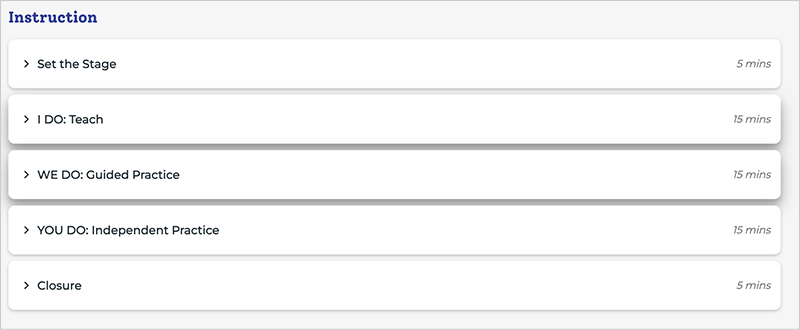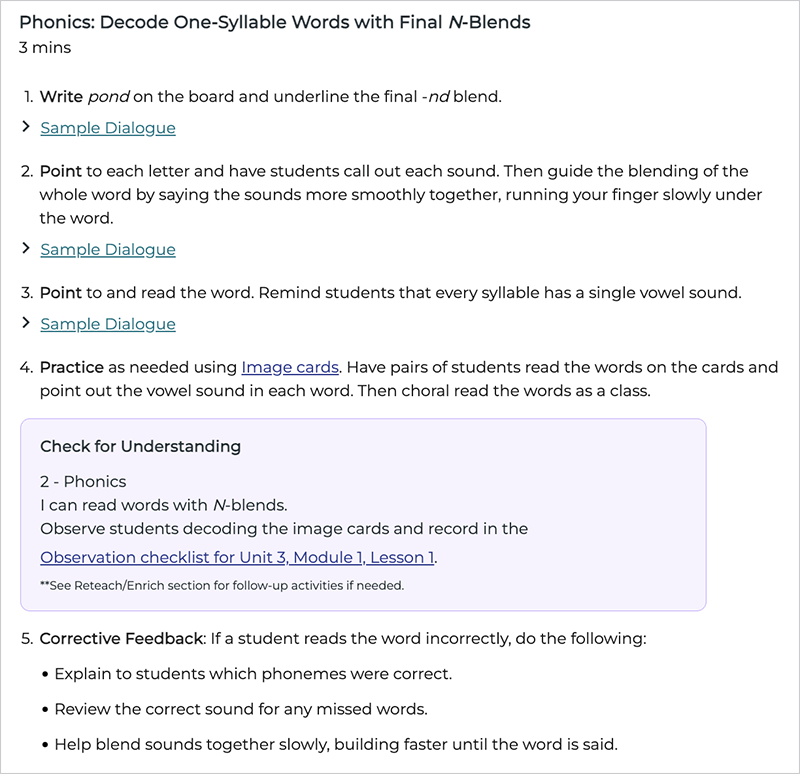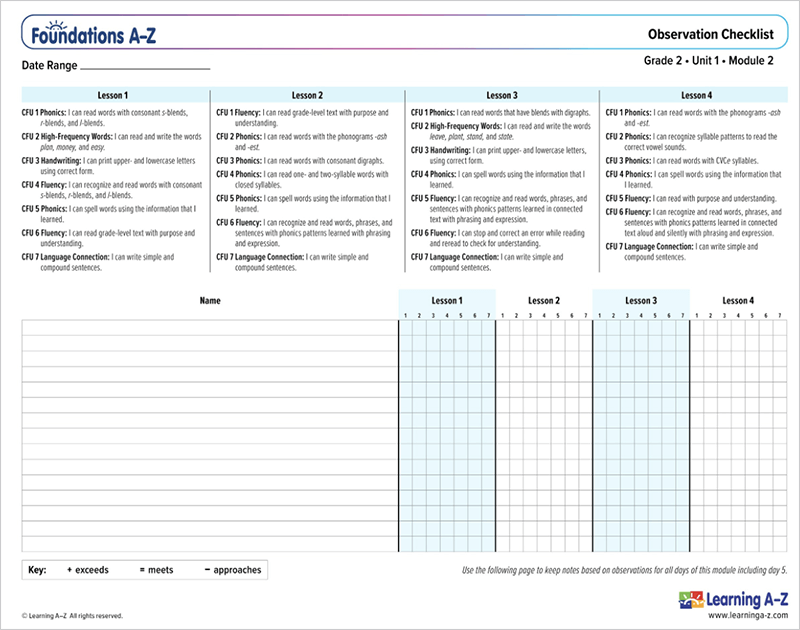Educators, districts, and states across the country are making the shift to Science of Reading-aligned literacy practices. It’s a shift that is necessary but often challenging to make without support and guidance. As I look through Foundations A-Z®, a digital foundational literacy skills curriculum from Learning A-Z® for grades K–5, I am excited to see so much alignment to Science of Reading research, and I am eager to share those connections with you.
When evaluating a curriculum’s alignment to the Science of Reading, I look for some key features. I have organized those key features as headings with additional comments and thoughts about Foundations A-Z.
“Activities include some of my favorites: phoneme-grapheme mapping, word chaining, word lists/cards, word sorting, and word building. Spiral review of previous skills is included and decodable texts are incorporated into lessons. It’s quality content.”
Strong Scope and Sequence
Every good curriculum includes a scope and sequence that outlines the skills to be taught. This scope and sequence builds from simple to complex, outlining a sequential progression of skill, and should be easy to reference to help teachers keep track of both skills taught and upcoming skills.
The first thing I looked for in Foundations A-Z was the scope and sequence, and I was pleased to find there is one for each grade level of the program for K–5. There is also an easy-to-reference outline of the Instructional Progression of Skills for all grade levels.
Foundations A-Z can be used as a standalone curriculum for foundational skills or it can be used as a supplemental resource to pair with your existing curriculum. The included scope and sequence makes it possible to match the skills within Foundations A-Z to your own foundational skills curriculum.

Explicit and Systematic Instruction
Explicit and systematic instruction is essential in a good foundational skills curriculum. One key characteristic of explicit instruction is the gradual release of responsibility from teacher to students, often referred to as I Do, We Do, You Do.
Within Foundations A-Z, each lesson plan is organized with this gradual release of responsibility in mind. There is an I Do, We Do, and You Do section of each lesson plan. The I Do and We Do portions include direct instruction and guided practice of foundational skills. The You Do portion of the lesson is when activities are completed on the digital student platform.

As I explored the lesson plans within Foundations A-Z, I liked the way all materials are organized and hyperlinked within each lesson. Teachers can find everything they need in the same place as the lesson plan. This allows teachers to focus more on the content they’re teaching and less on the logistical demands of the curriculum.
In the materials section of the lesson plan, projectable and printable resources are available. Some examples include books, mouth articulation videos, phoneme/grapheme alphabet cards, sound boxes, word chaining mats, word cards, and practice worksheets.

Authentic, High-Repetition Skills Practice
The way students practice skills in a foundational literacy curriculum is important. Students should have many opportunities to respond accurately as they practice new skills, with timely corrective feedback from the teacher. Lessons should be built to maximize high reps of practice with the focus skill and previously taught skills.
Within Foundations A-Z, I see many opportunities for skill practice and spiral review of previously taught content. However, it will be up to the teacher to ensure these things happen within a lesson. Educator knowledge makes a huge difference in the delivery of any curriculum.

Addresses Key Components of Literacy
A foundational skills curriculum should address the key components of literacy: phonemic awareness, phonics, fluency, vocabulary, and comprehension. Although all components should be included at every grade level, the earlier grades should have a greater emphasis on phonemic awareness and phonics.
Not only am I impressed with the instructional routines included in Foundations A-Z, I am also pleased to see the high-quality content for phonological awareness and phonics. Phonological awareness activities build students’ awareness of individual speech sounds in English and quickly transition to phonemic awareness activities focusing on segmenting and blending speech sounds in words. Phonics skills are taught in a logical progression with a focus on learning patterns for both decoding (reading) and encoding (spelling). Activities include some of my favorites: phoneme-grapheme mapping, word chaining, word lists/cards, word sorting, and word building. Spiral review of previous skills is included and decodable texts are incorporated into lessons. It’s quality content.
Practice With Decodable Texts
Decodable texts include repeated phonics patterns and high-frequency words students have already been taught. They are essential for an early literacy curriculum because they allow students to practice their new decoding skills in a supportive text.
Foundations A-Z has a collection of decodable texts that can be downloaded, printed, and projected. These decodable texts follow the program’s scope and sequence.

Informative Assessments
Educators should use screening and diagnostic assessments to identify students who need additional support. Ongoing progress monitoring assessments should be used to ensure students are making progress with the instruction they are receiving.
In Foundations A-Z, I see opportunities to monitor student progress through observation checklists and unit assessments. Observation checklists are embedded within each lesson, and unit assessments are included throughout the curriculum.
Educators will need to use screening and diagnostic assessments outside of Foundations A-Z, however, that is a common practice with most foundational curriculums.

Support for Teachers
Shifting to a structured literacy curriculum that aligns to the Science of Reading can be a daunting task for many educators. A good curriculum will include support for teachers in both the why and the how: why certain instructional practices are effective and how to implement the instruction with students.
Foundations A-Z includes several different professional development supports for teachers. There are short videos from literacy coaches and experts about Science of Reading research and instructional practices. There are also articles about research presented in teacher-friendly language.

In Summary: I’m Impressed!
Overall, I am impressed with Foundations A-Z as a foundational literacy curriculum. It includes strong Science of Reading-aligned content in a teacher-friendly digital format. I would encourage educators and districts to consider Foundations A-Z as a core curriculum or as a supplement to an existing curriculum.
Try Foundations A-Z in Your Classroom
See for yourself how this award-winning K-5 foundational literacy solution can build foundational skills, simplify instructional planning, and improve student outcomes.


